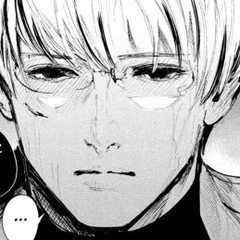

Afficher/Masquer les calques ph (Show/Hide Layers ph) Show/Hide Layers ph
Numéro d'identification du contenu:2083426
-
2 418
Actions permettant d’afficher et de masquer les calques d’esquisse sans faire défiler ni avoir besoin de cliquer sur le petit carré de visibilité ! Ajoutez des raccourcis à ces actions pour les utiliser rapidement ! Actions for showing and hiding sketch layers without scrolling or needing to click the small visibility square! Add shortcuts to these actions to use them quickly!


Si vous disposez d’une manette ou d’un clavier, il peut être plus facile d’utiliser un bouton physique pour les actions courantes que d’avoir à trouver des éléments et à appuyer sur de petits boutons et boîtes à l’écran. Cela est particulièrement vrai lorsque vous utilisez de nombreux calques et qu’ils sont espacés, et qu’il devient plus difficile de faire défiler et de trouver le calque que vous devez changer. Le bouton de visibilité est également très petit !La vérification fréquente de votre dessin sans l’esquisse vous permet de voir et d’ajuster le dessin final plus rapidement !
- Windows : Paramètres de > de raccourcis... > Catégorie : Actions automatiques- macOS/iOS : menu principal de l’application > paramètres de raccourci... > Catégorie : Actions automatiques- Recherchez le nom de l’ensemble d’actions et ajoutez des raccourcis aux actions Afficher le calque et Masquer le calque de votre choix.Limitation: L’une des limites actuelles de CLIP STUDIO PAINT est que « masquer » et « afficher » doivent être deux actions distinctes, vous avez donc besoin de deux raccourcis différents. Espérons qu’ils pourront supprimer la limitation à l’avenir afin que la bascule ne soit qu’un raccourci.Certains logiciels de macro peuvent basculer automatiquement entre deux raccourcis pour un bouton. Si votre appareil ou votre logiciel dispose de cette fonctionnalité, ce serait une bonne chose à utiliser.
Cliquez avec le bouton droit de la souris sur la barre de commandes et choisissez [Paramètres de la barre de commandes...]Choisissez ensuite [Actions automatiques] dans la liste déroulante, recherchez les actions souhaitées et choisissez [Ajouter] pour chacune d’elles. Puis [Fermer] une fois que vous avez terminé.Vous pouvez cliquer avec le bouton droit de la souris ou appuyer longuement sur le bouton et choisir [Paramètres de l’icône...] pour modifier l’icône.
En nommant votre calque « sketch », vous en ferez la cible de l’action.La cible peut également être un dossier. Assurez-vous que le calque à l’intérieur n’est pas également nommé « croquis »(Si plusieurs calques portent le même nom, l’action ne ciblera que le calque le plus bas qui correspond au nom.)J’ai également inclus des actions pour cibler le calque nommé « ref » ou « %sketch » à la place. Si vous souhaitez cibler un autre nom de calque, j’ai des instructions sur la façon d’enregistrer votre propre auto-action ci-dessous.
Utilisez les raccourcis clavier ou les raccourcis pour afficher et masquer le calque d’esquisse ! Pas besoin de trouver le calque ou de taper sur le petit carré !


1. Créez une nouvelle illustration de Clip Studio Paint.2. Créez 2 nouvelles auto-actions (vides) et nommez-les show et hide.3. Créez un nouveau calque comme calque cible et nommez-le le nom de votre choix.4. Sélectionnez un autre calque. C’EST IMPORTANT !5. Sélectionnez l’action « masquer ».6. Commencez à enregistrer l’action. (cliquez sur le bouton rouge d’enregistrement)7. Cliquez sur la visibilité du calque cible nommé pour le masquer.8. Arrêtez l’enregistrement de l’action. (cliquez sur le bouton rouge d’arrêt)9. Répétez les étapes 5 à 8 avec l’action « afficher le calque » et enregistrez en montrant le calque cible à la place.



If you have a controller or keyboard, it can be easier to use a physical button for common actions than having to find items and tap small on-screen buttons and boxes. This is especially true when you use many layers and they get spaced apart, and it gets harder to scroll and find the layer that you need to switch. The visibility button is also really small!Checking your drawing frequently without the sketch helps you see and adjust the final drawing faster!
- Windows: File > Shortcut Settings... > Category: Auto Actions- macOS/iOS: Main App Menu > Shortcut Settings... > Category: Auto Actions- Find the name of the action set and add shortcuts to the Show layer and Hide layer actions of your choice.Limitation: A current limitation of Clip Studio Paint is that "hide" and "show" need to be two separate actions so you need two different shortcuts. Let's hope they can remove limitation in the future so the toggle can just be one shortcut.Some macro software can automatically toggle between two shortcuts for one button. If your device or software has this feature, this would be a good thing to use for.
Right-click on the command bar and choose [Command Bar Settings...]Then choose [Auto Actions] in the dropdown, find the actions you want and choose [Add] for each. Then [Close] after you're done.You can right-click/tap-and-hold on the button and choose [Icon settings...] to change the icon.
Naming your layer "sketch" will make it the target of the action.The target can also be a folder. Make sure the layer inside is not also named "sketch"(If you have multiple layers named the same, the action will only target the lowest layer that matches the name.)I've also included actions to target the layer named "ref" or "%sketch" instead. If you want to target a different layer name, I have instructions on how to record your own auto-action below.
Use the hotkeys or shortcuts to show and hide the sketch layer! No need to find the layer or tap on the little square!


1. Make a new Clip Studio Paint illustration.2. Make 2 new (empty) auto-actions and name them show and hide.3. Make a new layer as your target layer, and name it the name you want.4. Select a different layer. THIS IS IMPORTANT!5. Select the "hide" action.6. Start recording the action. (click the red record button)7. Click on the visibility of the named target layer to hide it.8. Stop recording the action. (click the red stop button)9. Repeat steps 5 to 8 with the "show layer" action and record showing the target layer instead.

Numéro d'identification du contenu:2083426
Date de publication : 1 year ago
Date de mise à jour : 1 year ago















































